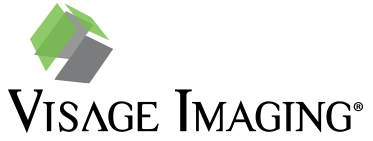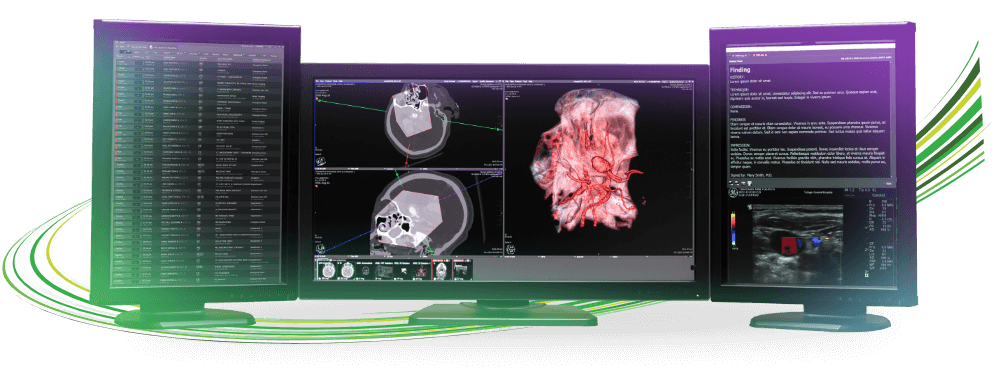SIIM 2019 | Visage Top Five
- Visage 7
- Enterprise Imaging Platform
- top five
- artificial intelligence
- AI
- Proven Enterprise Imaging
- Mayo Clinic
- Visage 7.1.14
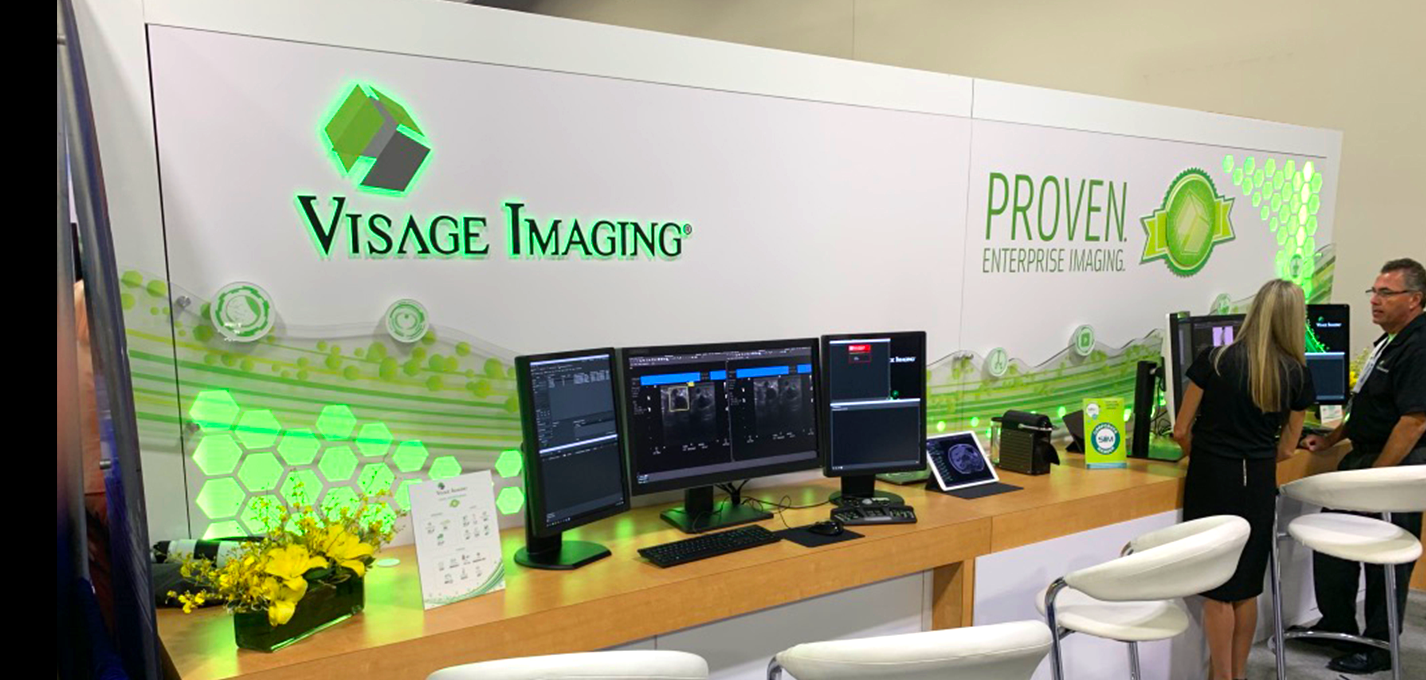
The SIIM annual meeting is an annual favorite for many of us in imaging informatics and 2019 did not disappoint. This year’s meeting included a double-digit increase in professional attendance and a packed exhibit hall. There truly is no better meeting to listen to imaging professionals explain their biggest challenges, to discuss proven evidence-based solutions, to chat about Visage’s perspective regarding top-of-mind educational sessions, while also demonstrating the latest from Visage 7. If you were able to make it to SIIM19, we hope our insights resonate with your experience, and if you were unable to attend, we hope you find our top five helpful. Now, on with Visage’s Top Five!
Visage Imaging | SIIM 2019

1 - Empowering with the Largest PACS Go-Live Ever
The SIIM19 theme was “Explore. Empower. Engage,” and Visage did that and more, by sharing with everyone the success of our unprecedented Visage 7 go-live across Boston. If you haven’t heard, Visage 7 went live across two of Boston’s largest, most acclaimed hospitals and their multiple affiliate hospitals, simultaneously the same week of SIIM19. The go-live continues in two other phases during July 2019, replaces multiple legacy PACS from multiple vendors, and includes more than 600 radiologists. Impressively, Visage has successfully gone live in just over 6 months, at a system that performs over 5,000 new studies daily, resulting in nearly 37,000,000 annually processed studies via Visage 7. Immediate diagnostic access to all prior studies (averaging 20 priors per patient) occurs by intelligently querying multiple legacy PACS archives, and their VNA, while their migration effort is completed. That’s affirmation of Visage’s technical prowess and flexibility, enabling go-live without any delay.
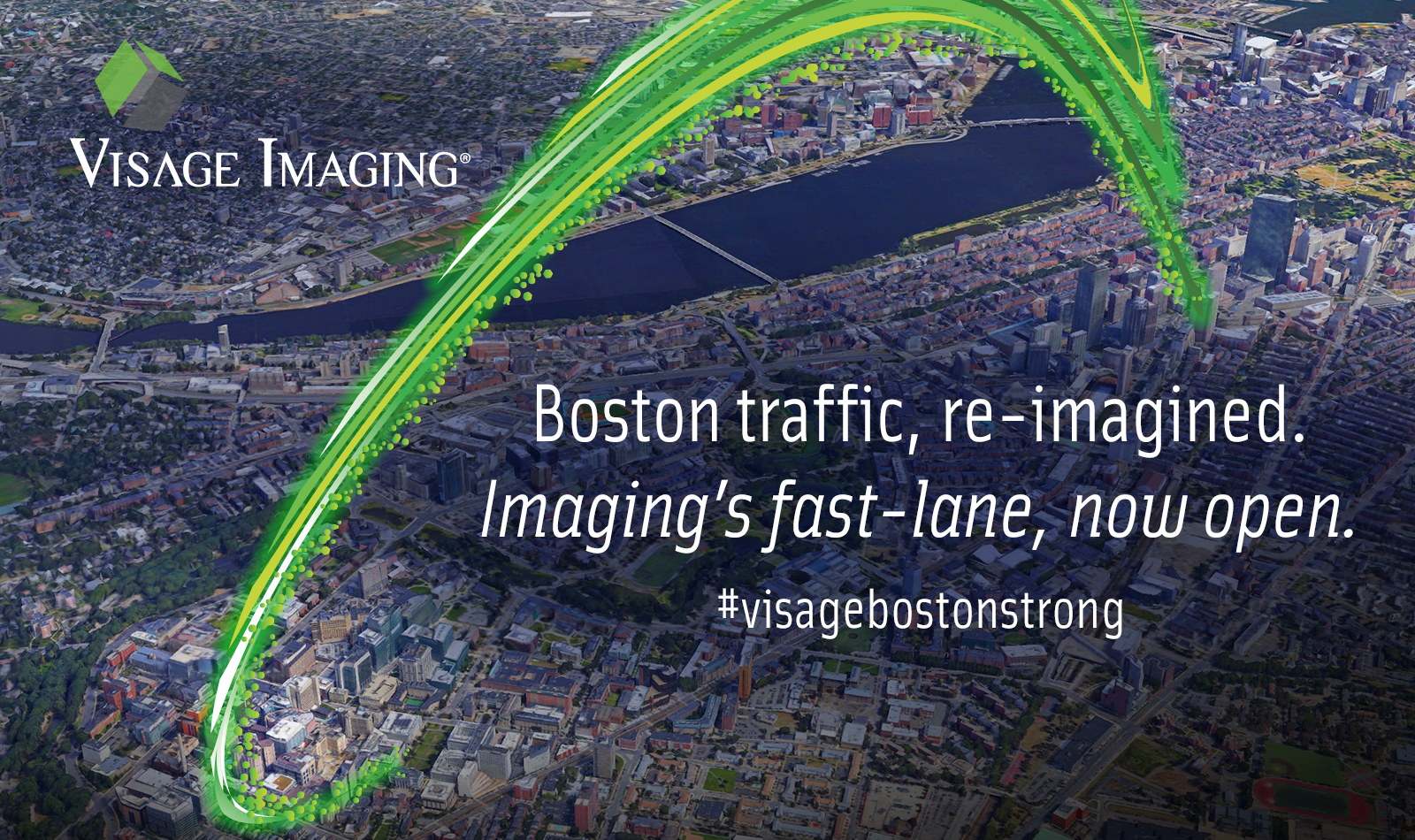
The successful go-live is also a testament to the exceptional Visage team, which has expertly supported radiologists in the potentially challenging transition to reading on a new system after decades of entrenched behaviors developed using multiple legacy PACS. End user feedback has been fantastic, and dozens of SIIM19 attendees stopped by to congratulate us on the go-live.
As the saying goes, “easier said than done,” and Visage for sure gets it done. We’re extremely proud of what we’ve achieved together thusfar, and look forward to completing the transformation this month.
2 - From Many to One
By the very inclusion of the #AskIndustry Session, “The Shift from Many PACS to One Enterprise PACS: Challenges” in their annual meeting program, SIIM recognized that we’ve arrived at a pivotal time where consolidation is everywhere. Not only have hospitals, imaging centers and radiology groups consolidated together on a massive scale, but organizations have also embarked on initiatives to simplify and consolidate their many PACS into a single PACS solution for the enterprise. Mayo Clinic, for example, presented four posters at SIIM19 that discussed their enterprise-wide convergence and simplification initiative which eliminated 5 different RIS (that they replaced with Epic Radiant) and 9 different PACS that were eliminated and replaced by Visage 7:
- A Real-World Radiology and Enterprise Imaging Implementation at Mayo Clinic– in Concert with the Electronic Medical Record
- Radiology Convergence – a Simultaneous RIS, PACS and EHR Implementation at Mayo Clinic - Experiences within the Technical Command Center
- Radiology Convergence – a Simultaneous RIS, PACS and EHR Implementation at Mayo Clinic - Governance of Implementation
- Radiology Convergence – a Simultaneous RIS, PACS and EHR Implementation at Mayo Clinic - The Final Countdown, Preparing for Go-Live
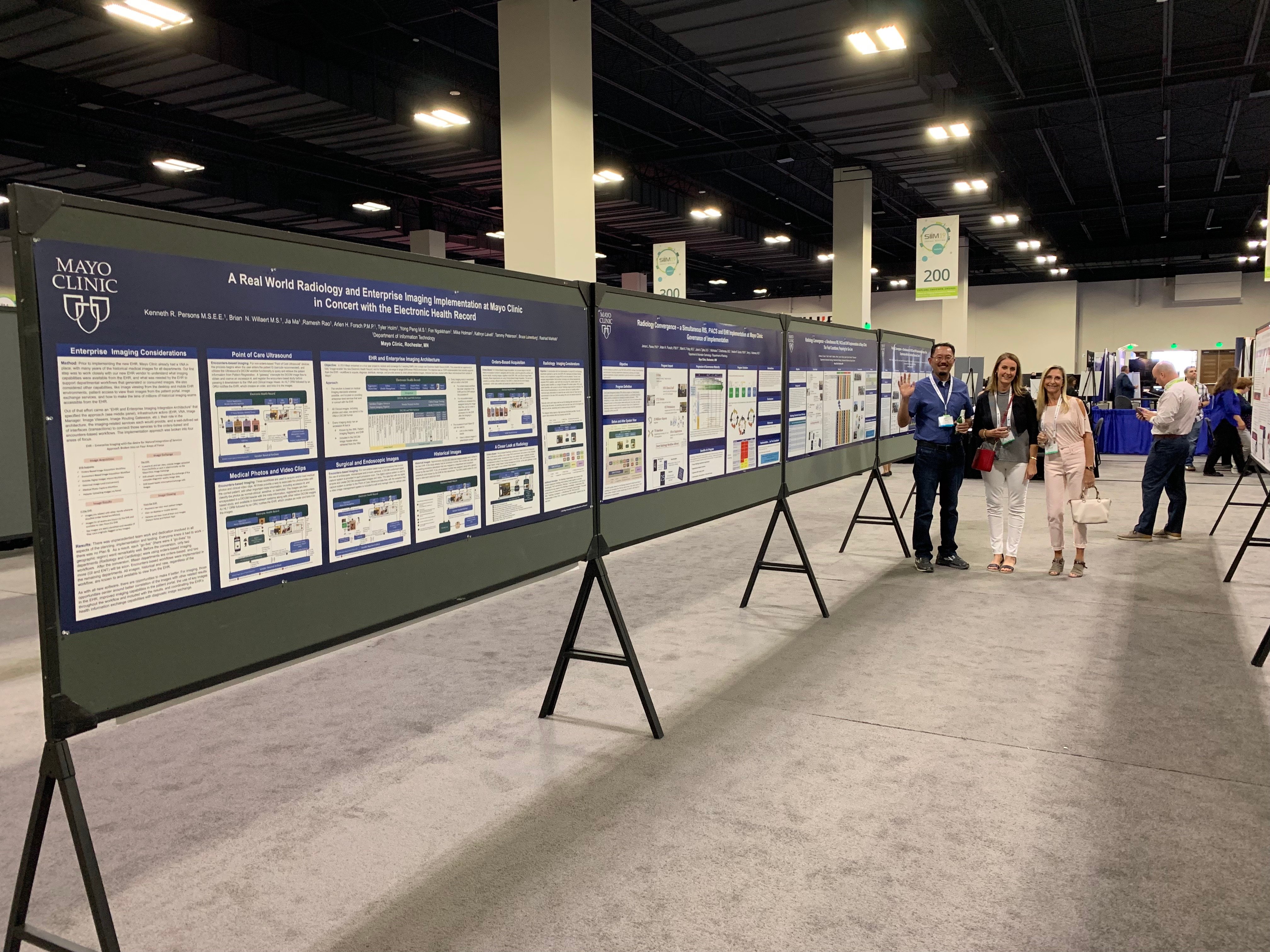
Four (4) Mayo Clinic Poster Presentations | SIIM 2019 Reception
In contrast to the success of Visage customers, some organizations have struggled in their efforts to move beyond their multiple PACS, failing to move past selection efforts for a new solution, while others have implemented new solutions in the hope they would succeed, but instead have languished with repeated challenges. Visage’s Bobby Roe, Director, Solutions Architecture and Customer Experience, participated in the #AskIndustry panel discussion providing expert advice for the standing room only assembled audience.
Some of the panel members focused their attention on the need to wait for data quality initiatives to be implemented and for access to future enhanced networks, such as 5G. Bobby counseled, “We’re all anxious for 5G for a variety of reasons, but if you’ve got the right [Enterprise PACS] solution in place, you don’t need to wait.” Visage has experience simplifying and centralizing imaging operations across organizations of all sizes, complexity and business models with local, regional and national scale. When asked about the single most important aspect of an enterprise PACS transformation, Bobby commented, “When planning your [Enterprise Imaging] governance structure start with a foundation of communications.” He described that enterprise-scale initiatives require open, frequent communications at all levels to ensure nothing gets overlooked, so there are no hidden project landmines that could unexpectedly derail the initiative.

The conversation then pivoted to the future, where a few of the panel members discussed the potential impact of AI and cloud-based solutions. Bobby explained, “Cloud-based, server-side systems are clearly the next evolution of Enterprise PACS.” He further pointed out that product and architectural decisions can make or break a project. “When you’re planning for a large enterprise or regional PACS, make sure you have the scalability to handle, for example, at some of our customers we have seen upwards of 70,000 exams per hour, processed through a simple dual CPU server.”
With Visage, regional and national scale imaging initiatives are not a future-looking dream, but instead are the success stories of our customers today. Despite this truth, there are many large, national organizations who continue to implement PACS on the local level, one excruciating PACS at a time. Will your organization be the next to streamline to one PACS with regional or national scale? We look forward to bringing your dreams to reality.
3 - Big Gets Bigger
Today’s imaging big data challenges are faced one patient at a time, with digital breast tomosynthesis (DBT) studies sized at .8-1 GB per study, compressed on disk. Combine a current DBT study with multiple DBT priors and that can be quite a challenge for legacy PACS. In fact, we heard over and over at SIIM19 that managing DBT current studies plus multiple priors is a significant challenge for legacy PACS, and in nearly all cases does not allow the institution to eliminate the use of dedicated breast imaging workstations. In stark contrast, Visage 7 enables institutions to eliminate dedicated breast imaging workstations with ease, with multiple customers routinely displaying a current with multiple years of DBT priors with ultrafast speed.
Earlier in 2019, multiple Visage 7 customers went live with the latest in high-resolution (high-res) DBT. Offering even better 3D image quality, these imaging studies are significantly larger than traditional DBT, coming in at 2.25 GB per study, compressed on disk. That equates to a 180% larger study for high-res DBT (as compared to traditional DBT), not even considering the additional impact of priors! At SIIM19, multiple attendees who use legacy PACS told us flat out that they have halted or postponed orders for the new DBT because their PACS and networks can’t handle the additional network load, telling us that it would bring their PACS to its knees. They would say, “We can’t,“ and in response we would say, “Visage can.”
It’s true, not only has Visage always supported diagnostic reading of high-res DBT on Visage 7, with the latest production release of Visage 7.1.14, the display of high-res DBT has gotten even faster. The end result is Visage 7 customers need not fear ordering high-res DBT, as that’s the value of a proven server-side enterprise imaging platform.
4 - Discussion About Artificial Intelligence Gets Real
The conversation about AI at SIIM19 fell from the hype stratosphere, and suddenly seemed to have more teeth. More FDA-cleared algorithms are clearly on the rise, and increasingly we’re hearing from customers who have been piloting various AI applications who would like to see them integrated into production use with Visage 7. We also learned that one of our prominent academic customers intends to go-live with two self-developed AI algorithms into production reading with Visage 7 later this year. And with our latest release of Visage 7.1.14, Visage 7 now supports integration to 3D CAD for digital breast tomosynthesis (DBT) from iCAD PowerLook Tomo Detection. That’s all excellent news.
Additionally, more of our academic and community health system customers expressed interest in our AI initiatives. At SIIM19, we discussed with them the use of the Visage 7 research server to eliminate the need for homegrown viewer applications in the data science lab. Visage 7 bridges the long-standing gap between researchers and radiologists, providing the same viewer to test, train, validate and evaluate algorithms. It also provides a robust environment for data gymnastics, using the same tools in the data science lab that radiologists use for annotation, segmentation and labeling in production diagnostic reading.
5 - Server-side is NOT the Same
One of the topics that repeatedly came up during SIIM19 was confusion about the use of the term “server-side”. Some vendors use “server-side” in their discussions with customers to check-the-box, and tell the buyer “what they think they want to hear”, but when the system is delivered, installed and goes live, the end result is far from what the buyer had anticipated. Here’s some examples of “server-side” failures/limitations that we heard discussed at SIIM19:
- One major PACS vendor touts being “server-side”, yet if an image series is not initially displayed in the viewports and that image series is needed for display, the user must tediously wait for the series to be downloaded from the server and only then it can be displayed. This vendor also touts a broad set of clinical capabilities, but in actuality they use multiple third-party applications that have limited integration and a user experience that is different from the main PACS.
- One major PACS vendor touts being “server-side”, yet their product is woefully immature. Image display is very slow with empty black viewports, image interactions significantly lag user mouse movements, expected priors for display frequently can’t be retrieved, manual window/level changes are unusable, hanging protocols are severely limited to basic layouts, desktop integration and third-party app orchestration is restricted, URL-launch of the viewer is not possible, and the list goes on and on. To overcome many of these issues, the “server-side” capabilities are scaled back or eliminated through the use of local caching, and the vendor has recommended reverting back to legacy software versions “pre server-side”.
- Multiple major PACS vendors tout being “server-side”, yet “server-side” technologies are actually only available for limited advanced visualization workflows, not for all modalities, and not for all diagnostic interpretation.
- Some major PACS vendors tout being “server-side”, yet when reading of DBT is required, they require a Gigabit network connection to the client desktop.
- Multiple major PACS vendors tout being “server-side”, yet they don’t support reading of high-res DBT (as noted earlier in this blog post).
In contrast, Visage 7 is proven with 10 years of experience delivering comprehensive server-side capabilities. Ultrafast performance is delivered for all modalities with One Viewer, at enterprise-scale, with future-proof capabilities for AI and support for the latest cutting edge modalities.
And that’s a wrap for the Visage Top Five for SIIM19!
We’ll see everyone next year at SIIM20 (June 24-26, 2020) in Austin, TX. Thank you for listening and we look forward to hearing your feedback.
